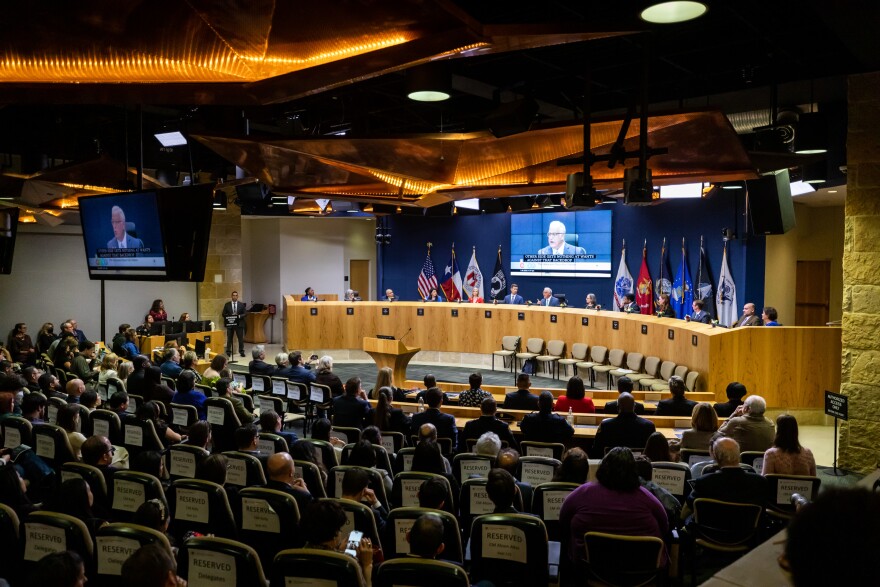
Last updated:
I was yawning and I couldn’t stop.
That’s what I remember most about the October 23rd City Council meeting. I was tired. I hadn’t slept well, the room was cold, and the proceedings were, as usual, slow and procedural. I sat in the audience waiting for Item 11, papers on my lap.
In front of me and behind me, representatives from the hospitality industry and other stakeholders addressed the dais—hotel general managers, CEOs, and lobbyists—speaking about “economic engines” and “ten-year plans” in support of the $450 million Convention Center amendment.
An apparently homeless woman sat next to me and began asking what I was there for. I gave polite, brief answers. When the meeting began, she tried speaking again. I quietly signaled that I needed to listen. She understood and moved on. I wasn’t there as an activist or industry representative. I was simply a resident who came to present information from the public record.
My name was called.
I walked to the podium with my documents. My voice was shaky, but the figures I had reviewed were straightforward.
I wasn’t there to give a speech. I was there to read directly from the City’s own materials.
I read the first part of my findings from the “Recommendation for Action” for Item 11. I read the figures the Council had before them.
“My primary concern,” I said, “comes from a significant failure in contractual compliance, documented on page one of the City’s own RCA. The contract required 10.30% MBE and 2.38% WBE participation. The RCA states that actual participation to date is 0.69% MBE and 0.08% WBE. That represents a 93.3% gap on the MBE goal and a 96.6% gap on the WBE goal.”
I continued: “In addition, the project’s public budget narrative differs from the figures contained in the same document. The project is already approximately $145 million above the widely referenced $1.6 billion figure.”
My time ended. I still had two paragraphs left.
“Mr. Mayor,” I asked, “May I have the time? It’s just two paragraphs.”
Mayor Watson, who had been listening closely, responded:
“No, it’s not.”
There was a brief pause. Council Member Mike Siegel leaned into his microphone. “Mr. Mayor,” he said, “He just asked you something.”
The Mayor acknowledged him and then concluded my time. “Thank you, sir.”
As the microphone began to cut, I added: “I will be submitting my findings to the City Auditor and the Ethics Review Commission.”
I gathered my papers and left. I did not stay afterward. As I walked out, one of the attendees opposed to the amendment politely attempted to speak with me, but I declined. My purpose had been to present the information I had reviewed, nothing more.
The Mayor’s decision meant the final two paragraphs did not enter the spoken public record.
For transparency, this is what I was not able to read:
“This pattern of timing between contributions and project milestones raises concerns about the appearance of impartiality. The prime contractor’s Austin office leader, Chuck Lipscomb of JE Dunn Construction, contributed $1,750 to Mayor Watson and $474 to Council Member Alter. His spouse, Mandi Lipscomb, contributed an additional $900 to Mayor Watson, with both of her 2024 contributions made on the same day as her husband's.”
“A similar pattern appears among executives from the design firm Page Southerland Page—including Jonathan Sylvie, Daniel Brooks, Brandon Townsend, and Wendy Dunnam Tita—who together contributed over $2,050 to Mayor Watson and $450 to Council Member Alter. These contributions occurred in 2022, ahead of the $1.2B contract approval, and again in 2024–2025, preceding the consideration of this $450M amendment.”
The amounts themselves are modest. The concern, as noted by governance experts and previously reported by the Austin Bulldog, is the appearance of alignment between contributions and significant Council actions. Observers have expressed that such patterns can affect public confidence in impartial decision-making.
After my comments concluded, the Council voted to approve the $450 million amendment. Council Member Alter, who had received contributions noted above, made the motion.
My review of the public record led me to request additional scrutiny. Since I was not able to finish my statement, I will be submitting the complete written analysis, including these two paragraphs, to the Office of the City Auditor and the Ethics Review Commission for their consideration.
If you believe this article contains an error, please see our Corrections & Retractions policy for how to request a correction.